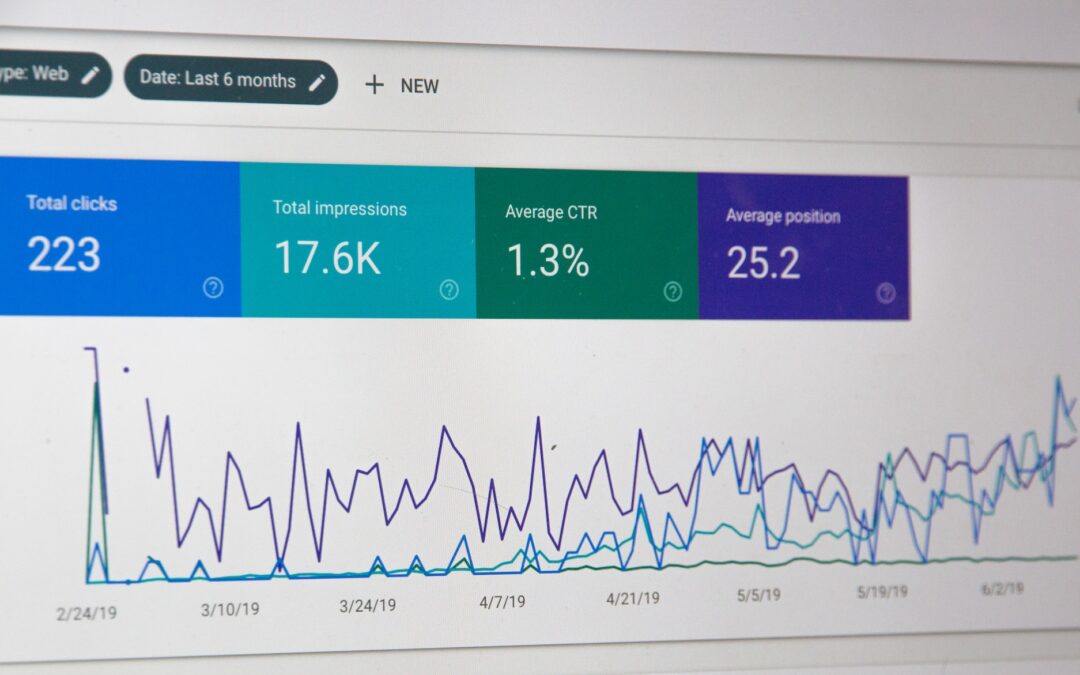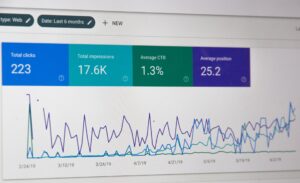by Kevin Lewis | Feb 4, 2025 | Digital, Social media, sticky
Growing a YouTube channel takes more than just uploading videos and hoping people find them. Social media plays a huge role in helping creators reach a wider audience, build a community, and keep viewers coming back for more. The right approach can make all the difference when it comes to YouTube growth promotion.
Picking the Best Platforms
Not every social media platform works the same way, and using them all without a strategy can be overwhelming. Instead of posting everywhere, focusing on platforms that match the content style and audience makes a bigger impact.
-
Twitter (X) is great for quick updates, video teasers, and interacting with fans. Using trending hashtags and participating in relevant conversations can attract new viewers.
-
Instagram works well for short video clips, behind-the-scenes content, and eye-catching thumbnails. Stories and Reels offer an easy way to share highlights and link directly to new uploads.
-
TikTok has become one of the best places for video creators. Posting short clips, teasers, or related content can drive traffic to a YouTube channel.
-
Facebook is still a strong choice for longer videos and building a group around a channel’s niche. Sharing videos in relevant groups can introduce content to more people.
-
Reddit and Discord offer opportunities for niche audiences. Being active in communities related to a channel’s content can help build trust and direct people to new videos.
Choosing two or three platforms that fit best and staying consistent is more effective than posting everywhere without a plan.
Creating Shareable Content
People scroll through social media quickly, so grabbing attention in a short amount of time is key. Instead of just posting a YouTube link and hoping for clicks, adding value to each post makes it more likely to be shared.
-
Short clips with captions can tease new videos while giving people something entertaining right away.
-
Eye-catching images or custom graphics make posts stand out in crowded feeds.
-
Asking questions or starting discussions encourages engagement and interaction.
If a video covers a trending topic or answers a common question, presenting it as a helpful resource increases the chances of people clicking and sharing.
Posting at the Right Time
Timing can make a huge difference in how many people see a post. Every platform has different peak times when users are most active.
-
Twitter (X) often sees the most engagement in the mornings and early afternoons.
-
Instagram performs best in the evenings when people are winding down for the day.
-
TikTok can be effective both during lunch breaks and late at night.
-
Facebook traffic peaks in the early afternoon and evenings.
Testing different posting times and paying attention to analytics helps figure out when the audience is most likely to engage.
Engaging with Followers
Posting regularly is important, but responding to comments, answering questions, and joining conversations make social media work even better. People are more likely to watch and share videos when they feel connected to the creator.
-
Replying to comments on posts helps build relationships with viewers.
-
Liking and sharing fan content shows appreciation and encourages more interaction.
-
Polls and Q&A sessions keep audiences involved and invested in the content.
Even taking a few minutes each day to engage with followers can make a big impact on growth.
Using Hashtags and Trends
Hashtags help posts reach a wider audience, especially on Twitter (X), Instagram, and TikTok. Using a mix of popular hashtags and niche-specific ones gives posts a better chance of being seen by the right people.
Keeping an eye on trends and challenges can also open opportunities for more exposure. If a trending topic relates to a YouTube video, joining the conversation and sharing content at the right time can bring in new viewers.
Repurposing Content
One video can be turned into multiple pieces of content across different platforms. Instead of just sharing the full video link, breaking it into different formats keeps social media fresh while continuously driving traffic back to YouTube.
-
A longer YouTube video can be cut into short clips for TikTok and Instagram Reels.
-
Quotes or key takeaways can be turned into text posts or graphics.
-
Bloopers or behind-the-scenes moments can make fun and engaging content.
By getting creative with how content is shared, it stays relevant for longer and reaches more people.
Collaborating with Others
Teaming up with other creators, influencers, or even fans can introduce a channel to a whole new audience. Shoutouts, guest appearances, and cross-promotions help both parties grow by sharing followers.
-
Collaborating with influencers in the same niche can bring in targeted viewers who are already interested in the content.
-
Running giveaways that require people to check out the channel can increase engagement and exposure.
-
Featuring fans or responding to their content builds stronger connections and encourages them to share.
Building relationships with other creators can be just as valuable as growing an audience directly.
Staying Consistent Without Spamming
Consistency is important, but posting too much can have the opposite effect and turn people away. Finding the right balance between being active and not overwhelming followers keeps engagement strong.
A good approach is to:
-
Post daily or a few times a week, depending on the platform.
-
Avoid posting the same content on all platforms at the same time.
-
Mix different types of posts instead of always sharing just video links.
By keeping content fresh and interesting, social media stays a positive tool for promotion instead of feeling repetitive.
The Smartest Way to Grow
Social media can be a powerful tool for YouTube growth promotion when used the right way. Focusing on the best platforms, sharing content creatively, and engaging with followers makes a big difference in reaching new viewers and keeping them coming back. With the right mix of strategy and personality, social media turns from just a promotion tool into a strong part of a YouTube channel’s success.

by Kevin Lewis | Dec 3, 2024 | Digital, sticky
The History of IPTV: From Concept to Reality
IPTV (Internet Protocol Television) has transformed the way we consume entertainment, offering unparalleled flexibility and convenience. However, the technology we enjoy today is the result of decades of innovation and evolution. From its conceptual beginnings to its modern-day application, IPTV’s journey reflects the rapid advancement of internet technologies.
The Conceptual Beginnings
IPTV’s roots can be traced back to the 1970s, a time when the concept of transmitting television signals over digital networks was first explored. Early research focused on leveraging telephone lines for video transmission, laying the groundwork for today’s internet-based streaming.
1. Early Experiments
In the 1970s and 1980s, telecom companies conducted experiments to deliver video content over copper telephone lines. These efforts faced significant challenges due to bandwidth limitations and the lack of supporting infrastructure.
2. The Emergence of Digital Compression
The development of digital compression technologies, such as MPEG, in the 1980s marked a turning point. Compression reduced the size of video files, making it feasible to transmit video data over existing networks.
The First Practical Applications
By the 1990s, the rapid growth of the internet and advancements in computing paved the way for the first practical IPTV implementations.
1. Video-on-Demand Services
One of the earliest applications of IPTV was video-on-demand (VOD). This allowed users to select and watch pre-recorded content at their convenience, a stark contrast to the fixed schedules of traditional TV.
2. Interactive TV Trials
Companies like AT&T and British Telecom launched interactive TV trials in the mid-1990s, testing features like live channel switching and pay-per-view. These trials demonstrated the potential of IPTV as a flexible alternative to cable TV.
IPTV’s Breakthrough in the 2000s
The early 2000s saw significant progress in IPTV technology, driven by faster internet connections and the adoption of broadband services.
1. Broadband Expansion
The proliferation of high-speed internet made it possible to deliver high-quality video streams without interruptions. This development was crucial for IPTV’s widespread adoption.
2. Middleware Solutions
IPTV middleware, software that connects content delivery systems with user interfaces, emerged during this period. Middleware streamlined content distribution and introduced features like electronic program guides (EPGs) and user profiles.
3. Telecom Partnerships
Telecom providers began offering IPTV as part of bundled services, combining internet, television, and phone plans. This integration brought IPTV to mainstream audiences.
The Rise of Streaming Platforms
The late 2000s and early 2010s marked the rise of global streaming platforms like Netflix, Hulu, and YouTube, which incorporated IPTV principles into their services.
1. Shift to On-Demand Models
Viewers increasingly preferred on-demand content, which allowed them to watch their favorite shows and movies whenever they wanted. IPTV adapted by offering customizable viewing experiences.
2. Multi-Device Compatibility
Advancements in mobile technology enabled IPTV services to support multiple devices, including smartphones, tablets, and gaming consoles. This flexibility redefined how audiences engaged with content.
IPTV Today
Modern IPTV services offer a combination of live TV, VOD, and interactive features, supported by advanced technologies such as AI and 5G. Here’s what defines today’s IPTV landscape:
1. Adaptive Bitrate Streaming
Adaptive streaming ensures smooth playback by adjusting video quality based on the viewer’s internet speed, eliminating buffering and interruptions.
2. Global Accessibility
With cloud-based content delivery networks (CDNs), IPTV services can reach audiences worldwide, overcoming traditional geographical restrictions.
3. Enhanced Personalization
AI-driven algorithms curate personalized content recommendations, improving user satisfaction and engagement. If you’re looking for reliable IPTV services that reflect this evolution, check out iptv españa.
Challenges and Future Prospects
Despite its success, IPTV faces challenges such as piracy, bandwidth demands, and market competition. However, the future looks promising:
1. 5G Integration
The rollout of 5G networks promises faster, more reliable IPTV services, even in areas with limited broadband infrastructure.
2. Advanced Security Measures
Technologies like blockchain and digital rights management (DRM) will play a crucial role in combating piracy and protecting intellectual property.
3. Immersive Experiences
As AR and VR technologies mature, IPTV services may incorporate immersive experiences, redefining how we interact with digital content.
Conclusion: A Journey of Innovation
From its humble beginnings to its current status as a dominant force in entertainment, IPTV has continually evolved to meet the demands of modern viewers. By combining innovation, accessibility, and convenience, IPTV has reshaped how we consume media. As it continues to evolve, IPTV is poised to remain at the forefront of digital entertainment for years to come.

by Kevin Lewis | Jan 6, 2024 | Digital, Internet, Social media, sticky
Decoding Call-to-Action on YouTube
In the dynamic ecosystem of YouTube, a call-to-action (CTA) can be a potent tool in your content creation arsenal. It’s not merely about producing engaging content, but also about encouraging viewers to interact and engage with your channel. This article delves into the art of crafting effective CTAs on YouTube.
Understanding the Impact of CTAs
CTAs are powerful prompts that can nudge viewers towards a desired action, be it liking a video, subscribing to your channel, or sharing your content. They bolster engagement levels, leading to increased visibility and strengthening the bond between you and your audience.
The Social Media Marketing Advantage
Incorporating Social Media Marketing (SMM) panels can amplify the effectiveness of your CTAs. SMM panels provide services that enhance your reach, such as boosting likes, shares, and subscribers. When used in conjunction with compelling CTAs, they can significantly increase viewer interaction on your channel.
Crafting Compelling CTAs
An effective CTA needs to be clear, specific, and compelling. It should incite curiosity or convey a sense of urgency. For instance, instead of simply asking viewers to subscribe, explain why they should subscribe and how it would benefit them.
The Timing and Placement
The placement and timing of your CTAs matter. While it’s common to place CTAs at the end of the video, it may be worth experimenting with different locations, such as the beginning or the middle of the video. Sprinkle your CTAs throughout the video but avoid overdoing it, as it might put off your viewers.
Utilizing Visual CTAs
YouTube offers features such as end screens and cards that can be used to visually represent your CTAs. These features can direct viewers to other relevant videos, playlists, or even your website, thereby increasing interaction and engagement.
Creating a Sense of Community
A CTA can also be a tool to foster a sense of community among your viewers. Encourage viewers to leave comments, ask questions, or share their thoughts. This not only increases interaction but also provides valuable feedback that can help you improve future content.
In the dynamic world of YouTube, a well-crafted CTA can make a significant difference to viewer interaction. By understanding the impact of CTAs, using LenosTube.com SMM panels, crafting compelling CTAs, experimenting with timing and placement, utilizing visual CTAs, and fostering a sense of community, you can boost viewer engagement and foster a loyal audience on your channel.

by Kevin Lewis | May 30, 2023 | Digital, Internet, Social media
The Digital Marketing Maestros: What They Do and Why You Need Them
In today’s rapidly evolving digital landscape, having a strong online presence is crucial for businesses to thrive. This is where online marketing agencies come in, helping businesses of all sizes navigate the complex world of digital advertising. But what exactly do these agencies do, and how do they contribute to a company’s growth? Let’s take a closer look at the various roles and responsibilities of online marketing agencies.
Digital Strategy Architects
Online marketing agencies start by understanding a client’s business objectives and target audience to create a comprehensive digital strategy. This involves evaluating the current online presence and identifying areas of improvement, followed by proposing a combination of tactics that could include:
– Search Engine Optimization (SEO): Enhancing website content to boost search engine rankings, making it easier for potential customers to find you online.
– Pay-Per-Click (PPC) Advertising: Running strategic ad campaigns on platforms like Google and Facebook to generate more traffic and leads.
– Social Media Marketing: Crafting and managing engaging social content to build brand awareness and customer loyalty.
– Content Marketing: Creating valuable and informative content, such as blogs, videos, and infographics, to attract and retain a targeted audience.
– Email Marketing: Reaching out to customers with personalized and relevant email campaigns to drive sales and promote customer retention.
Creative Wizards
Once a tailored strategy is in place, online marketing agencies move on to designing eye-catching visuals, generating compelling written content, and crafting impactful marketing messages. By leveraging their creative skills, the agencies help businesses stand out from the competition and connect with their target audience.
Data-Driven Analysts
Online marketing agencies don’t rely on guesswork; they rely on data. By constantly measuring and analyzing the performance of different marketing efforts, they gain valuable insights into which tactics are most effective. This not only allows for tweaks and adjustments to the ongoing strategy but also ensures maximum return on investment.
Technology Trailblazers
Digital marketing is all about staying up-to-date with the latest industry trends and technological advancements. Online marketing agencies help businesses adopt new tools and platforms to streamline their marketing processes and improve overall efficiency. They also stay informed about changes in search engine algorithms and social media policies to ensure ongoing compliance, minimizing the risk of penalties or issues that could harm a company’s online reputation.
Partnering for Success
Now that we’ve unraveled the world of online marketing agencies, it’s evident that these teams of versatile experts wear many hats, functioning as strategists, creatives, analysts, and technology leaders. By partnering with an online marketing bureau Breda, businesses can save valuable time and resources while benefiting from the specialized knowledge needed to drive growth in an increasingly competitive digital landscape. Collaboration with an online marketing agency is more than a one-time project – it’s an ongoing relationship built on a shared vision of success.

by Kevin Lewis | May 22, 2023 | Digital, Software, Technology
A New Era of Productivity Tools
For Mac users who value efficiency and workplace productivity, Office 2021 is a game-changer. With its sleek design, enhanced features, and seamless integration with macOS, it’s become an essential suite of tools for young adults in the 20-50 age range. Let’s take a closer look at what Office 2021 for Mac has to offer and how you can get the most out of this powerful software.
Unleashing the Power of Word 2021
Microsoft Word has long been the go-to resource for crafting documents and reports. In Office 2021 for Mac, Word has seen some exciting upgrades:
– Designer: Effortlessly create visually appealing layouts and stylish documents without the need for graphic design experience. Designer offers suggested layouts for images, allowing you to drag and drop elements with ease.
– Focus mode: Keep distractions at bay while working on important documents using the focus mode. This feature provides a clutter-free workspace for a more concentrated writing experience.
Excel 2021: Data Manipulation Like Never Before
Excel 2021 boasts improved functionality, making data management and analysis even more efficient:
– Dynamic Arrays: Automatically fill adjacent cells with formulas, simplifying the data organization and calculations.
– Quick, customizable visuals: Create data-driven conclusions with a single click by using the new Ideas feature, which provides instant suggestions based on input data in the form of charts and graphs.
– Enhanced collaboration: Work with colleagues on the same spreadsheet simultaneously and enjoy real-time updates regardless of device or location.
PowerPoint 2021: Captivating Presentations Made Easy
PowerPoint 2021 for Mac brings together new tools and advanced AI capabilities to elevate your presentation game:
– Presenter Coach: Rehearse your presentations with feedback from Presenter Coach, an AI tool that analyzes your speech patterns, pacing, and filler words to ensure your delivery is polished and engaging.
– SmartArt improvements: Turn simple bullet points into compelling visuals with the enhanced SmartArt functionality. Choose from a range of designs to create an organized and attractive representation of your information.
Outlook 2021: Streamline Communication and Scheduling
Finally, Outlook 2021 for Mac offers an updated user interface and powerful tools to help you manage and schedule emails, meetings, and appointments with ease:
– Voice input: Dictate emails and meeting requests using the built-in voice-to-text feature, boosting efficiency while staying hands-free.
– My Day view: Keep tabs on your daily tasks and calendar events right from your inbox with the My Day view, ensuring you never miss an important appointment or deadline.
Maximizing Your Office 2021 Experience
As shown, Office 2021 for Mac offers a plethora of innovative features designed to optimize productivity and accelerate workflow. By fully utilizing these tools, young adults across the globe can increase efficiency, enhance collaboration, and stay ahead in their professional endeavors. It’s time to embrace Office 2021 for Mac and change the way you work for the better.

by Kevin Lewis | May 8, 2023 | Digital, Social media, sticky
Small Business, Big Impact: Why Online Marketing Matters
In today’s digital age, small businesses face fierce competition and rapid changes in consumer behavior. With limited budgets and resources, it’s crucial for small business owners to establish a strong online presence and leverage effective small business marketing strategies to stay ahead of the game. Here, we’ll explore some tried-and-tested online marketing strategies that can help your small business make a big impact.
- Social Media Savvy: Connect, Engage, and Grow
If there’s one thing you can’t ignore, it’s the power of social media. With billions of active users worldwide, platforms like Facebook, Instagram, Twitter, and LinkedIn offer immense opportunities for small businesses to connect and engage with their target audience.
Start by identifying the platforms that best cater to your industry and audience preferences. Create and share valuable content that resonates with your customers, encourages interaction, and showcases your brand personality. Don’t forget to leverage features like hashtags, polls, and stories to expand your reach and keep your audience engaged.
- Content Creation: Educate, Entertain, and Inspire
Content marketing is an essential piece of the online marketing puzzle. By creating and sharing high-quality content, you can position your small business as a thought leader in your industry and foster trust and credibility among your audience.
Consider starting a blog, podcast, or YouTube channel to share your expertise, insights, and tips. Focus on creating content that educates, entertains, and inspires your audience. Remember, consistency is key – commit to a regular posting schedule and promote your content across your social media channels.
- Email Marketing: Nurture Relationships and Drive Sales
Despite the rise of social media, email marketing remains one of the most effective ways to nurture relationships with your customers and drive sales. Building a targeted email list and crafting compelling campaigns can help you stay top-of-mind with your audience and encourage repeat business.
Begin by offering valuable incentives like exclusive discounts, free resources, or access to premium content to encourage sign-ups. Use personalized, segmented campaigns to cater to different audience preferences and ensure your emails are mobile-friendly to maximize engagement.
- Search Engine Optimization (SEO): Get Found and Boost Visibility
When was the last time you searched for a product or service online? Chances are, you clicked on one of the first few results on the search engine results page. That’s where search engine optimization (SEO) comes in – by optimizing your website and content for search engines like Google, you can boost your visibility and attract more qualified leads.
Start by conducting keyword research to identify the search terms your target audience is using. Incorporate these keywords into your website content, meta tags, and URL structure. Additionally, focus on improving your site’s user experience, mobile-friendliness, and loading speed to enhance your search engine rankings.
Final Thoughts: Measure, Analyze, and Optimize
As you implement these online marketing strategies, it’s crucial to measure your results, analyze your performance, and optimize your efforts. Use tools like Google Analytics, social media insights, and email marketing reports to track your progress and identify areas for improvement. By staying agile and adapting your strategies based on data-driven insights, you’ll ensure your small business makes a lasting impact in the digital world.























